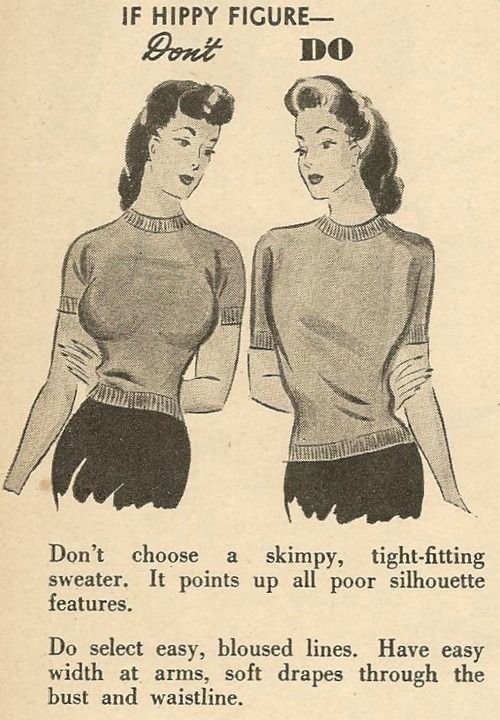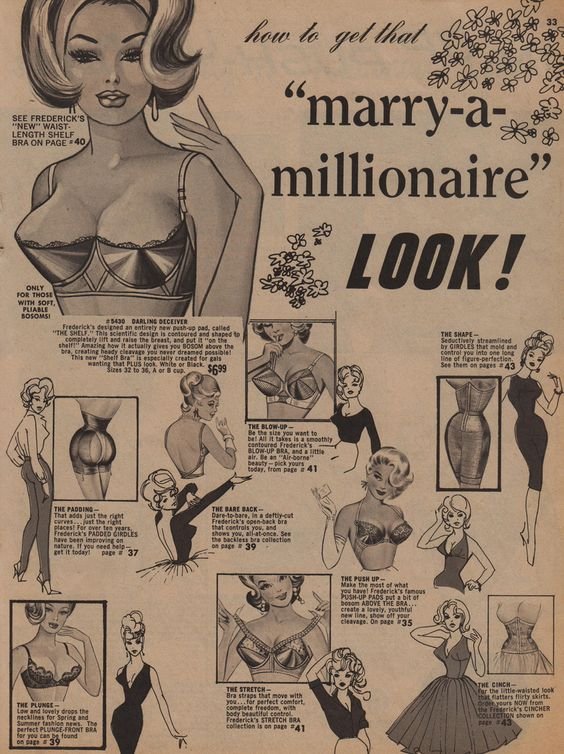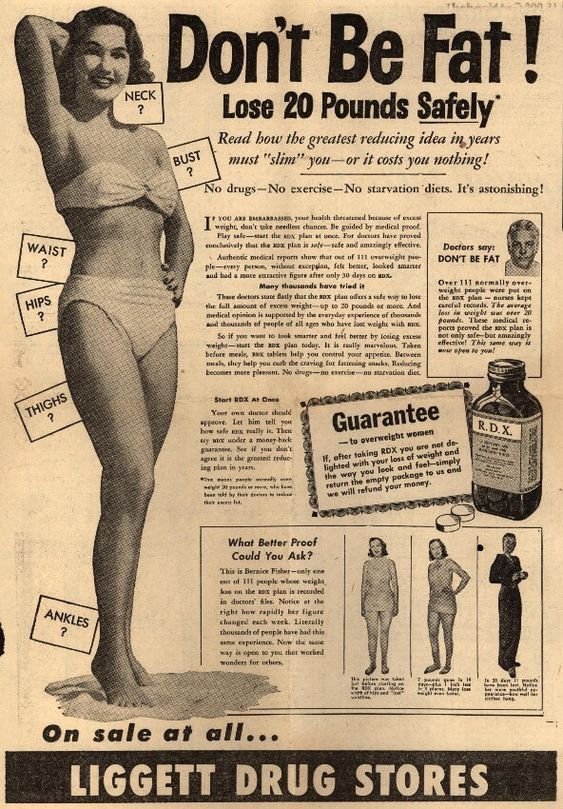Cellulite - An Ode to Cottage Cheese Thighs
Orange-peel skin, cottage cheese thighs, hail damage, and the mattress phenomenon.
All melodic names for summer's
public enemy number one:
Cellulite.
Cellulite, the dimpled appearance of texture on the skin, is a natural occurrence in most women's bodies. However, it has become a point of obsession in the beauty industry, creating an unrealistic standard of beauty that is unattainable for most. The term "cellulite" was first coined in the 1920s by a French medical journal, but it wasn't until the modern beauty industry's invention of the term that it became a widespread issue for women. In this article, I will explore the origin of the concept of cellulite, the medical reality of cellulite, and the social implications of cellulite’s impact on women.
80 to 90% of Women have Cellulite
Cellulite is a manufactured issue that makes women insecure and perpetuates unrealistic beauty standards. Cellulite is a naturally occurring phenomena in your body - the same as wrinkles, acne, dimples, freckles, and eyebrow hair. Except cellulite does not directly correspond to weight, height, health, muscle, or fitness. Almost everyone on this planet, including the astronauts on the space station, has cellulite.
So why does our society teach us to hate our cellulite?
Because we exist in a racist capitalist prison.
Despite its prevalence, the history of cellulite is not well-documented, as it was not considered a medical condition until the late 20th century. The term "cellulite" was first coined in the 1920s by French doctors, but it wasn't until the 1930s that it gained mainstream attention.
The term "cellulite" was first introduced in 1873 by French doctors Émile Littré and Charles-Philippe Robin. It was initially used to describe inflamed tissue and cells rather than referring to fat specifically. One Dr. Debec defined cellulite as a stubborn "feminine" problem in the February 1933 edition of the French magazine Votre Beauté. This was an ideal boogyman for the beauty industry, as it presented a common blemish on a large surface area on the body that couldn't be eradicated.
The preoccupation with thinness in the mid-20th century was about diminishing women and making sure we took up as little space as possible at a time when we became most threatening to the patriarchy. This obsession with thinness was also a symptom of America’s racist society that viewed black and brown women’s bodies and unhealthy, overly sexual and deviant. As black women clawed back at white supremacy and carved out a place in society, they were forced to assimilate to white beauty standards to remain safe and gain success.
As a result, women, especially white upperclass women were encouraged to obsess over their bodies. Working class women were not immune to societal pressures then just like today, but upperclass women had more time, money, and resources to seek that impossible body ideal. Without the need to work to support their families, their body became another reflection of their ability to care for and keep a proper respectable household image. A large part of being seen a a good wife and mother was (and still is) staying thin, beautiful, and fashionable.
Thus, the cellulite-fighting industry was born, becoming a multi-billion dollar industry that continues to this day. However, the effectiveness of these products has been widely debated, leading to a growing movement of body positivity and self-acceptance in the last few decades.
Cellulite has long been stigmatized in popular culture, despite the medical understanding that it is natural and not a negative health indicator. In the 1970s, women's magazines began promoting cellulite creams and treatments to "fix" the condition, creating a multi-billion dollar industry of cellulite-fighting products. However, the effectiveness of these products has been widely debated, with some experts claiming that they have little to no impact on the appearance of cellulite.
The beauty industry has long been focused on finding new products to sell, and the invention of cellulite provided a perfect opportunity to capitalize on women's insecurities. In the 1920s (and later into the heroin-chic 90s and its resurgence even now), the fashion industry began to focus on slender, boyish figures, which led to a rise in dieting and exercise to achieve this body type. As the fashion industry pushed for thinner models and slimmer silhouettes, the beauty industry saw an opportunity to create products that would help women achieve these unrealistic beauty standards. This is where cellulite came into play.
The Medical Reality of Cellulite
The invention of cellulite was a deliberate attempt to create a new beauty standard that could be sold to women. By pathologizing a natural occurrence, the beauty industry was able to create a new source of income, preying on women's insecurities and perpetuating unrealistic beauty standards. Cellulite was created as a way to exploit women's insecurities and create a new area for the beauty industry to profit from.
Studies evaluating various cellulite treatments, as discussed in this scientific journal, found no clear evidence of good efficacy in any of the treatments. However, according to a scientific article in a women's dermatology journal, laser and light modalities and radiofrequency have shown improvements in cellulite and a good safety profile.
It is worth questioning if why we willing to go to such lengths to eliminate a topical phenomenon that exists in 80-90% of women. The anti-cellulite industry is worth a staggering $845 million and is expected to grow by almost 8% over the next ten years consisting of creams, infrared treatments, and specialist massages. These attempts to eradicate cellulite reflect the many wars we wage on the natural aspects of our bodies.
Genetics plays a significant role in determining how much cellulite a person will have, as some people are more prone to developing cellulite than others. This is true of so many common body insecurities, from pimples to wrinkles and everything in between. Women are more likely to develop cellulite than men because of differences in the structure of our connective tissue.
We should ask ourselves, if 90% of men had cellulite,
would it be a multi-billion dollar industry?
The Social Implications of Cellulite
I distinctly remember the supermarket tabloids of my youth railing against celebrity women every summer for daring to be seen at the beach in a bikini with a single dimple of cellulite on their thighs. These women, who were most likely in the best shape of their lives, filming blockbuster movies or coming back from world tours, had the misfortune to stumble into some bad lightning (or find themselves edited to all hell by an unlucky intern) and were publicly shamed. Now we have BuzzFeed worthy listicles like “10 Celebrities with Cellulite and Are Proud of It” or “11 Celebrities on Why They DGAF About Cellulite.” Why are women’s bodies and their natural composition always a hot topic for listicles?
In this article from Yahoo News, Hillary Duff describes what it was like growing up as a teen star in the early 2000s. She said, “I came up in a time where paparazzi was taking a picture of your every move and zooming in on your cellulite.” She said she is proud of her body for its looks and all it has done for her and her children.
She also describes her nude cover shoot for Women’s Health magazine in this interview. “It was a great motivator to get my butt back in shape. Who knows how long I’m gonna hang onto that because I’m always in the 10-pound struggle — or just life. I don’t know if we call it a struggle.”
I appreciate that she clarifies her statement about the “10-pound struggle.” Why can’t our bodies change with the seasons? You could “gain” and “lose” 10 pounds of water weight on the same day or throughout a menstrual cycle. This is entirely medically normal and does not indicate poor or good quality health. Why must women’s bodies exist in a time-capsule forever frozen at 17? If men are celebrated for “dad bod’s” why can’t women be celebrated for “mom pouches” or bat wing arms?
The Impact of Cellulite on Women's
Self-Esteem
A study conducted by Yahoo Health found that feelings of body insecurity can develop as early as nine or ten years old in women. The study also showed that younger generations experience these insecurities even earlier than older generations.
The average millennial American woman surveyed recalled feeling self-conscious about their appearance at around age 13 or 14, the current generation of teenagers aged 13 to 17 report feeling this way as early as age nine or 10. Overall, girl’s peers and the media, from television to social media, are the largest sources of body shame. One in every four Americans said their parents made them feel self-conscious about their body. 60% of survey respondents experienced body shame as a result of someone — usually a classmate or acquaintance — making a comment about their appearance.
Did you have an Almond Mom?
The phrase Almond Mom which has been popularized on TikTok originated in a 2013 episode of The Real Housewives of Beverly Hills, which starred Yolanda Hadid and her then-teenage daughter, Gigi. Gigi, who is now a celebrity model, called her mother and said she was "feeling really weak" after only eating "half an almond."
In response, Yolanda told her 17-year-old daughter to “have a couple of almonds and chew them really well.”
Unfortunately the first thing some mothers teach their daughters is not their ABC’s or 123’s - they teach their daughters to hate themselves. This can happen in many ways, some mothers may make innocuous comments about their thunder thighs, double chin, or flabby arms. They refuse to be in photos because they hate how they look. They survive on SlimFast shakes and ice coffee, don’t eat breakfast or lunch and are always pissed and overstimulated off by dinner. There are countless women on TikTok showing their Almond Mom’s out for lunch, eating half a pita chip with beet hummus or having a Tic Tac for desert. These women don’t intentionally set out to give their daughters eating disorders - but their own issues with diet culture and body image inevitably spill over on to their children perpetuating the pain of womanhood.
My mother had anorexia and bulimia as a teenager and felt very insecure about her body. Thankfully she was not a so called “almond mom” to me growing up. (Although, we were on food-stamps all my life so it isn’t as though I had an abundance of meal choices in the first place.) My mom never taught me to feel insecure about my body or to judge others. My first experiences with body insecurity actually came from my friends in High School. I remember my girlfriends going around the group saying what they hated about their bodies and what they wanted to change. When the question came to me, I said I didn’t want to change anything about my body and I loved myself. I said I had 10 fingers and 10 toes, I didn’t have any physical disabilities or issues so why would I change anything? Unfortunately some of my friends were not thrilled by that response and said I must be conceited or stuck up if I didn’t want to change anything. To them, loving myself meant thinking I was better than someone else. Now 10 years later, they would probably be happy to know there are absolutely a few things I would like to change about my body.
Is Fashion Inherently Toxic?
The topic of looks, fashion, and body insecurity is very conflicting to me as someone who does love beauty and fashion and wants to live a healthy long life.
How much of my health goals also intersect with my body goals? Are those goals even attainable? Am I really looking to focus on my health, or do I want to achieve some stylistic ideal? Is it wrong that I still want to be smaller?
I don’t think it’s wrong that people would have an opinion about the way their body looks. I don’t believe Botox and filler are the 4th horsemen of the patriarchal apocalypse. But I do wonder if women didn’t live under the crushing weight of the patriarchy, would we still desire to change our bodies - and if so, what changes would we make to fit what ideal? I want to release myself from these shackles, but I also want to pose in a flattering way whenever my picture is taken.
The hatred and fear of cellulite are born from a multi-headed dragon. American culture values thinness and shuns fatness. If you exist in a larger body, especially as a woman, you are told you are unlovable, lazy, disgusting, and basically immoral. American culture values wealth, whiteness, “health,” success, “hard work” and individualism above all. We are encouraged to treat our bodies are fixer-upper houses, constantly painting, wallpapering, ripping up carpets to put down hardwoods, and buying new furniture and decor lest we fall behind and be seen as not only unattractive but also unhealthy, unintelligent, and unlovable. Bodies go in and out of style; people get fillers and then dissolve them, breast implants and then remove them, BBLs and then revisions.
Let’s Blame Men
According to a study from Germany, “heterosexual women appear to show more body image disturbance symptoms than homosexual women.”
In some ways, it is amazing people have the ability to change their bodies to match what they see in their mind's eye. For people dealing with gender dysphoria the ability to change their bodies to reflect the person they feel on the inside. It is important to remember that gender dysphoria can include trans and cis people - think of all the cis women who get breast implants to be more feminine. But at what point does it stop? If you nip one place, you have to tuck another. Is it feminist or anti-feminist to get Botox and want to remove your cellulite?
Many women find solace and body acceptance in the concept that our bodies were in a way made to carry children, nurse and nourish, hold and comfort the small and innocent. The reason women have a higher body fat percentage than men is so that we can bear the brunt of bearing children. However, what do I do - as a woman who can’t have children?
How does that impact my femininity and sense of womanhood if our one true judgement of woman is to bear the fruit of man?
Beauty is Real,
The Beauty Industry Is Fake
The beauty industry has played a significant role in perpetuating unrealistic beauty standards. The industry profits by creating and selling products that promise to help women achieve the idealized beauty standards portrayed in the media. This creates a vicious cycle where women are constantly bombarded with images and messages that tell them they are not good enough, leading to insecurities and a need to buy products that will make them skinnier, prettier, more worthy of love and respect.
Cellulite is just one example of how the beauty industry has created a new beauty standard that is impossible for most women to achieve. The industry has marketed creams, gels, and other products that promise to eliminate cellulite and create smooth, even skin. However, the effectiveness of these products has been widely debated (hint - none of these lotions and potions work), and many women continue to feel insecure about the appearance of their skin.
The beauty industry has also perpetuated unrealistic beauty standards by promoting a narrow definition of beauty that is based on age, weight, and skin color. This narrow definition excludes many women who do not fit the idealized standard, leading them to feel insecure and unworthy.
The impact of these unrealistic beauty standards on women's mental health is significant. Women who feel insecure about their appearance are more likely to experience low self-esteem, anxiety, and depression. This can have long-term effects on women’s mental health and well-being.
Black women are at the forefront of our growing movement of body positivity and self-acceptance, helping women rejecting the idea that their bodies must conform to societal beauty standards. The body positivity movement has now been popularized by white women showing off their bloated bellies, stretch marks, and cellulite on Instagram.
It is important to challenge these unrealistic beauty standards and promote body positivity and self-acceptance for all people. Women should be encouraged to embrace their bodies and feel comfortable in their own skin and safe in their own bodies.
The history of cellulite is complex, reflecting changing attitudes towards beauty and women's bodies. While it has been stigmatized and medicalized, it has also been a subject of artistic depictions and a catalyst for social change. It is important to remember that our bodies are unique and beautiful in their own way, and we should embrace, care for them, and be gentle to them regardless of their apperance.
Footnotes:
I would like to further explore the part that racism plays in the commodification of black women’s bodies and our western obsession with thinness in this blog. Until then, please see these wonderful informative videos:
How Racism and Fatphobia Intersect | The Rundown Podcast
https://www.youtube.com/watch?v=EGB11tyyKC4













